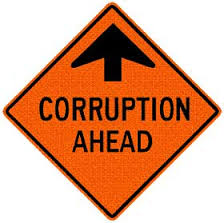Global Construction and Corruption
 With increasing focus on infrastructure projects and greater public demand for improvements, governments are preparing to ramp up construction projects. Part of the budgeting process has to acknowledge the cost of corruption.
With increasing focus on infrastructure projects and greater public demand for improvements, governments are preparing to ramp up construction projects. Part of the budgeting process has to acknowledge the cost of corruption.
It does not take a rocket scientist to figure out that construction and corruption go hand-in-hand. Corruption occurs in construction projects because of the incendiary mix of money, government bureaucracy, and lack of controls. The challenge for policy makers and prosecutors is to identify and implement strategies to minimize the occurrence and prosecute those companies and individuals caught in corruption schemes.
Some have estimated that losses from corruption can range as much as 10 to 30 percent of overall costs. When such a cost is considered, governments have to refocus their efforts to bring controls and proactive strategies in place to avoid huge losses in public money. Infrastructure investment is particularly important to almost every aspect of economic growth and development. One thing is clear, over costs and overruns in construction projects are commonplace and have a significant impact on emerging economies and the ability of leaders to promote economic development.
Books, papers, and a mountain of analyses have been produced to explain why the construction industry is so corrupt. Let’s look at a few of the significant factors.
The scale of construction projects is often large – dams, airports, railways and other projects create opportunities to inflate and conceal costs needed to fund bribery schemes. For government procurement systems, there are numerous opportunities to build in costs, conceal bribes, and operate within a specific set of governmental procurement requirements.
The number of government approvals required for such projects are large, requiring governments to regularly conduct reviews, inspections, and issue licenses. Each of these steps can be critical given the timing and importance of meeting substantive standards needed to continue the project within negotiated timeframes.
Construction projects involve multiple opportunities to conceal work and the cost for such projects – figuratively and literally. The transactions are often complex and involve multiple relationships among different trades and entities, requiring coordination and delivery schedules that are interdependent. Complex transactions again create opportunities for bribery and kickbacks.
In many situations, government procurement processes are not designed to minimize corruption but are aimed at ensuring timely delivery of projects with minimal cost overruns. With pressure to meet these requirements, contracting officers are targeted for bribery to seek necessary approvals, waivers and exemptions from stringent requirements. Lowest price bidding obsessions can lead to unfortunate results when it comes to anti-competitive bidding and corruption in the selection and implementation of construction projects.
 Procurement reform is leading to a greater focus on overall performance, quality and reputation for compliance. Another reform measure is focusing on the importance of project preparation – meaning planning and design in order to reduce the risk for corruption later in the project.
Procurement reform is leading to a greater focus on overall performance, quality and reputation for compliance. Another reform measure is focusing on the importance of project preparation – meaning planning and design in order to reduce the risk for corruption later in the project.
Forward-thinking procurement departments are employing some traditional anti-corruption techniques. In some cases, governments are conducting their own risk assessment to identify those areas where corruption risks are the greatest. By focusing on the specific areas of risk, such as permitting and regulatory requirements, as well as the overall bidding and procurement steps, government are seeking to reduce the opportunities and the incentives for bribery and kickbacks. More government are instituting procurement reforms and basic financial controls to monitor and supervise government expenditures in these projects.















